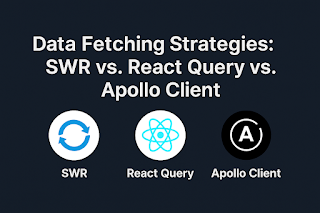Single Page Applications (SPA) vs. Multi-Page Applications (MPA)
Single Page Applications (SPA) vs. Multi-Page Applications (MPA)
When building modern web applications, developers are often faced with the choice between Single Page Applications (SPA) and Multi-Page Applications (MPA). Each architecture has its strengths, trade-offs, and ideal use cases. Understanding their differences is critical to choosing the right approach for your next project.
What is a Single Page Application (SPA)?
A Single Page Application loads a single HTML page and dynamically updates content as the user interacts with the app. Rather than loading new pages from the server, it uses JavaScript (often via frameworks like React, Angular, or Vue) to render updates.
Advantages of SPA:
- Speed: Faster user interactions after the initial load.
- Fluid UX: No page reloads—transitions feel seamless.
- Efficient Data Handling: Ideal for API-driven apps.
Challenges:
- SEO: Content isn't always readily crawlable by search engines.
- Initial Load Time: Can be slower due to the large JavaScript bundle.
- Client-Side Complexity: More logic in the browser can increase bugs and complexity.
What is a Multi-Page Application (MPA)?
A Multi-Page Application works traditionally: every action or navigation loads a new page from the server. Popular in eCommerce, blogs, and enterprise applications.
Advantages of MPA:
- SEO-Friendly: Server-rendered pages are easier for search engines to index.
- Simplicity: Each page has its own logic, reducing complexity.
- Robust for Large Apps: Especially with diverse, separate workflows.
Challenges:
- Slower Transitions: Full-page reloads feel less smooth.
- Heavier Server Load: More requests, more rendering on the backend.
When to Use SPA vs. MPA
CriteriaSPAMPAUser ExperienceSmooth, app-likeTraditional page-to-pageSEO NeedsNot ideal (unless SSR is used)Great for SEOApp SizeSmall to medium appsLarge, enterprise-scale appsDevelopmentClient-side heavyServer-side centricExamplesGmail, TrelloAmazon, BBC, LinkedIn
Hybrid Approaches
Frameworks like Next.js, Nuxt.js, or Angular Universal combine the best of both worlds by supporting Server-Side Rendering (SSR) and Static Site Generation (SSG)—making SPAs more SEO-friendly and performant.
Final Thoughts
The choice between SPA and MPA depends on your application’s needs:
- Choose SPA if you want a fast, interactive user experience (e.g., dashboards, SaaS platforms).
- Go with MPA for content-heavy or SEO-critical applications (e.g., eCommerce, news sites).
And remember: with today’s tooling, hybrid solutions are easier than ever—giving you the power to mix and match for the best results.
#SPA #MPA #WebDevelopment #Frontend #JavaScript #ReactJS #Angular #VueJS #SEO #NextJS #SSG #SSR #UXDesign #WebArchitecture




Comments
Post a Comment